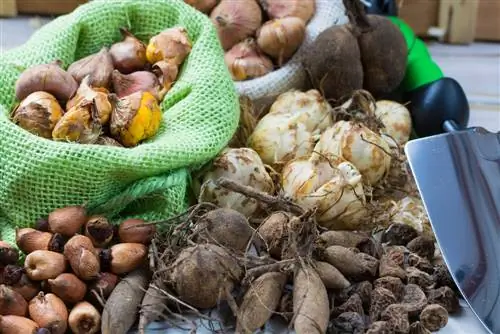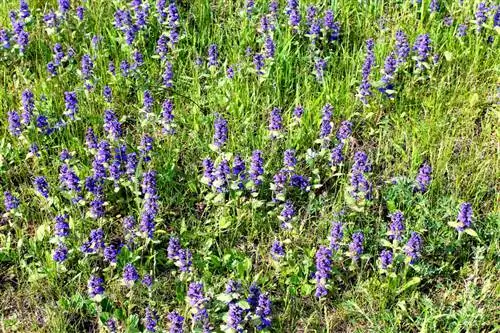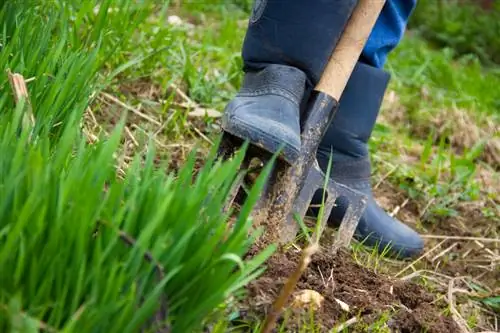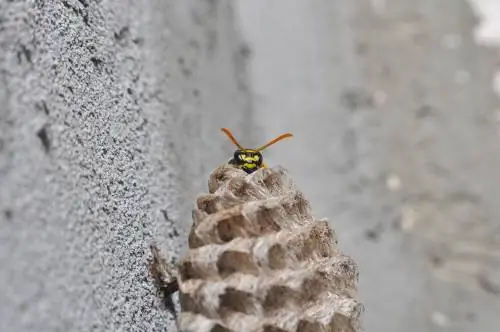- Author admin [email protected].
- Public 2023-12-16 16:46.
- Last modified 2025-01-23 11:22.
Hymenocallis festalis, Ismene for short, is not a native onion plant. Nevertheless, in this country it also develops large white flowers in summer that delight with their shape. But at some point the last sunny day will be over. Coming from tropical areas, it will struggle to cope with the cold of winter. Where to put the tuber?
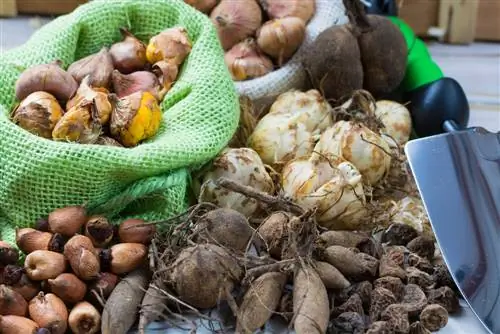
How do you overwinter Hymenocallis festalis (Ismene) correctly?
In order to overwinter Hymenocallis festalis (Ismene) successfully, you should dig up the bulbs in autumn, separate them from withered leaves and let them dry. They are then wrapped in newspaper or placed in wooden straw and stored in a dark, cool place (8-10°C) until they are replanted in April.
Waiting for wilting
Even if the petals lie withered on the ground in late summer, there is no need to rush. The frost will take a few more weeks to freeze the earth. But that's not the only reason why the onion should stay in the ground.
The vegetation phase is not yet completed when the flowers fade. The tuber gradually begins to obtain and store the nutrients from the leaves. From this it will draw strength for new growth in the coming year. Allow the above-ground parts of the Ismene to wilt completely before offering it safe overwintering.
Tip
If you don't want to collect seeds, you should cut off spent flowers as soon as possible. Otherwise, seed production uses valuable energy.
Cut back and dig up
Regardless of whether they grow in garden soil or containers, all onions must be removed from the soil. Separate them from the wilted leaves. Dig up the bulbs carefully so that none are damaged. If the tuber has large roots, you can cut it back now.
If you have discovered small onions near the large onion, you can dig them up too. In spring you can use it to propagate new plants.
Let dry
Bring the onions indoors, in a cool room. Spread them out on newspaper without letting them touch each other. Once the adhered soil has completely dried, shake it off. Then leave the onions to dry for another few weeks.
Do not speed up the drying process by keeping the onion warm. This process must take place slowly so that they remain flexible and do not break off later.
Storage location
Wrap the dried onions carefully in newspaper or place them in wooden straw. If pieces of a tuber break off, this can prevent flowers from forming the following year. The package will be left in its wintering place until around the beginning of April. This should be like this:
- dark
- cool
- if possible at 8-10 °C
The End of Tranquility
At the beginning of April all tubers are planted in pots. Beforehand, the roots can be cut back a little if necessary. The planted tubers are carefully watered and placed in light. Now an interim period begins in the house, during which the onions can grow.
After the frost period is over, wintering has finally come to an end. The pots can be put out. Specimens that are supposed to bloom in the bed are now planted at a depth of 8-10 cm and receive full care.

